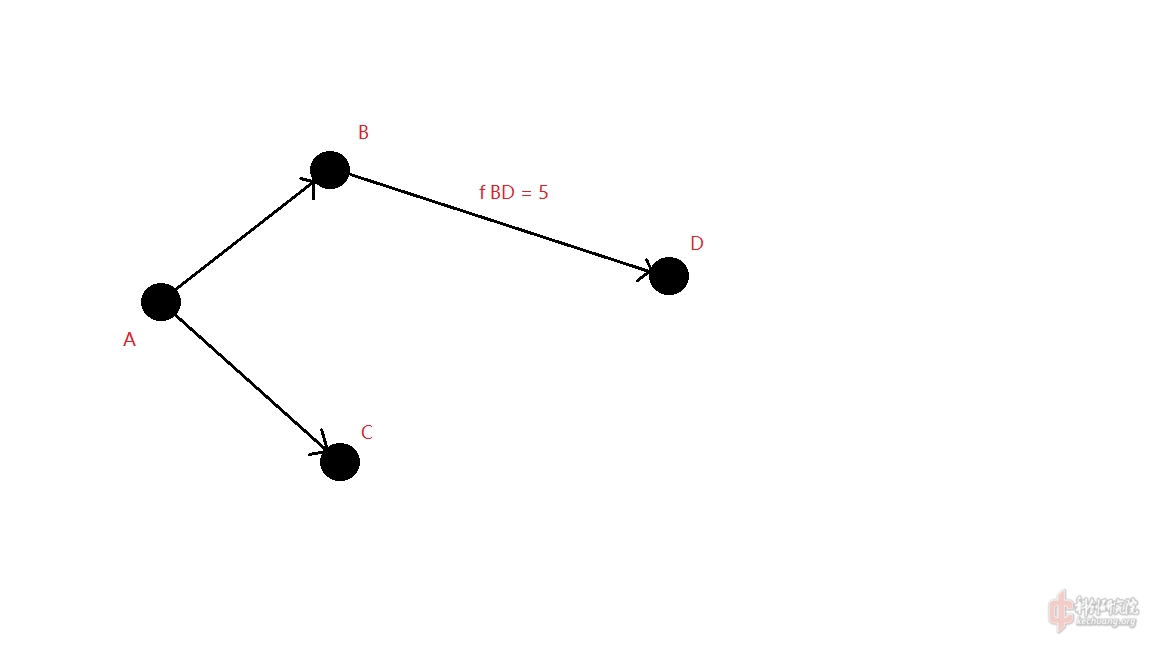Lz显然没有认真思考,而且闲的蛋疼
看到贪心和图,不应该先用归纳法证明一下么
代码也是浓浓的GPT味,换成我,函数括号里肯定不写空格,而且不会用邻接表(不过Python好像没结构体)。
在日常生活中,我们可能会遇到像导航路线选择的问题.这时我们就需要从诸多路径中选择最短的一条.
为了解决此类问题我们需要引入一个概念——图.

如图-1,这就是一个图.图中的每一个节点叫作顶点,连接两个顶点的线段叫作边.当然,有一些图中由顶点指向顶点的边是有向的(比如该图)叫作有向图,也有的图由顶点指向顶点的边是无向的叫作无向图.图中的每一条边都可以有一个权值
若将图描述为一个集合
其中
尽然了解了图的概念,我们将讲解一下Dijkstra算法.
参照百度百科对Dijkstra算法的介绍:迪杰斯特拉算法(Dijkstra)是由荷兰计算机科学家狄克斯特拉于1959年提出的,因此又叫狄克斯特拉算法。是从一个顶点到其余各顶点的最短路径算法,解决的是有权图中最短路径问题.迪杰斯特拉算法主要特点是从起始点开始,采用贪心算法的策略,每次遍历到始点距离最近且未访问过的顶点的邻接节点,直到扩展到终点为止.
设带权图
大致步骤如下:
d[v] = 0,sign[v] = True
对当前已确定的点i,寻找所有未确定的点j,若边<i,j>存在则进行松弛操作d[j] < d[i] + Weight[i][j]
确定i和d[i].即对所有为未打上标记的点j,枚举找出最小的点d[j],令sign[j] = True.
重复2、3步骤直到所有的点都被确定为止.
显然,理想情况下上述算法的时间复杂度为
以下是我用python编写的测试代码:
Pythonimport openpyxl
import heapq
def read_graph_from_excel(filepath):
workbook = openpyxl.load_workbook(filepath)
sheet = workbook.active
graph = {}
for row in sheet.iter_rows(min_row=3, values_only=True): # Start from row 3 now, since we skip the first two rows
node1, node2, weight = row[0], row[1], row[2]
if node1 not in graph:
graph[node1] = []
if node2 not in graph:
graph[node2] = []
graph[node1].append((node2, weight))
graph[node2].append((node1, weight)) # Assuming an undirected graph
return graph
def dijkstra(graph, start):
distances = {vertex: float('infinity') for vertex in graph}
distances[start] = 0
pq = [] # Priority queue
for neighbor, weight in graph[start]:
heapq.heappush(pq, (0, neighbor)) # Set initial distance to 0 for neighbors of start node
while pq:
current_distance, current_vertex = heapq.heappop(pq)
if current_distance > distances[current_vertex]:
continue
for neighbor, weight in graph[current_vertex]:
distance = current_distance + weight
if distance < distances[neighbor]:
distances[neighbor] = distance
heapq.heappush(pq, (distance, neighbor))
return distances
# Read the graph from Excel
file_path = r"C:\Users\Administrator\Desktop\new1\s.xlsx"
graph = read_graph_from_excel(file_path)
# Run Dijkstra algorithm
start_node = 1 # Change this to match the first node in your Excel file
distances = dijkstra(graph, start_node)
# Print the results
for node, distance in distances.items():
if node != start_node:
print(f"Shortest path to node {node}: {distance}")程序保存在C:\Users\Administrator\Desktop\new2目录下的s1.xlsx文件作为输入(不知道为啥我一用相对路径就报错,所以我选择了绝对路径 ),xlsx文件的A列用来保存原顶点,B列用来保存与其连接的顶点,C列用来保存权值.测试的图如下:
),xlsx文件的A列用来保存原顶点,B列用来保存与其连接的顶点,C列用来保存权值.测试的图如下:

结果为
PythonShortest path to node 2: 3
Shortest path to node 3: 6
Shortest path to node 4: 5
Shortest path to node 5: 7
Shortest path to node 1: 2
200字以内,仅用于支线交流,主线讨论请采用回复功能。